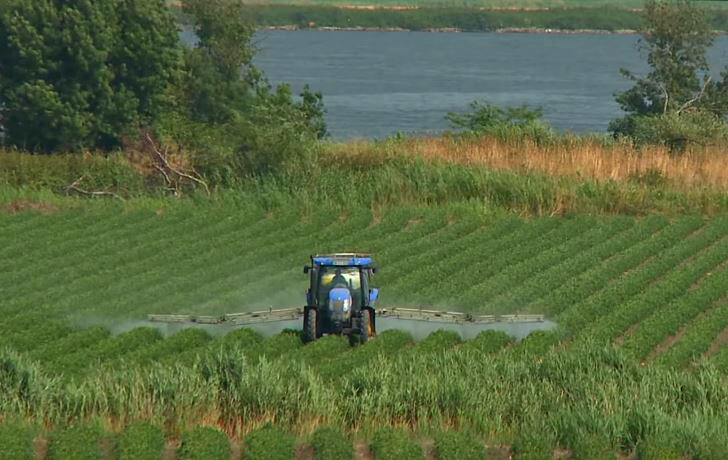
Spraying crop
Credit: EPA
Data Details Serious Harms Caused by Pesticides
July 31, 2023 - WASHINGTON— Last week, the Environmental Protection Agency announced that it will make the most recent 10 years of pesticide incident reports available to the public in a searchable database to be updated every month.
“This is the most significant step the EPA has taken to increase transparency with the public about pesticides and their harms,” said Nathan Donley, environmental health science director at the Center for Biological Diversity. “Making this database publicly available will help people understand the harms specific pesticides cause and hold regulators and pesticide companies responsible for dealing with the real-world damage from these products.”
Pesticide incident reports detailing harm to people, pets, wildlife or plants are one of the few ways the EPA, the public and researchers can learn about the real-world harms from pesticides to human health and the environment.
Previously, obtaining this information required submitting a Freedom of Information Act request, a burdensome process inaccessible to many, which delayed release of this basic information by months, and wasted government and public resources.
Recent public analyses of pesticide incident data have uncovered harms associated with multiple pet flea collars that had gone unaddressed by the EPA for years. In the cases of the Seresto flea collar and collars containing tetrachlorvinphos, the public’s identification of troubling incident data led the EPA to put safeguards in place for the flea collars, potentially sparing tens of thousands of pets and people from significant harm.
The newly released pesticide incident data system includes:
- 7,136 incidents involving glyphosate, with 4,412 of these incidents involving harm to people. Glyphosate is the most commonly used pesticide in the United States.
- 192,248 incidents involving imidacloprid, with 4,423 involving harm to people and most involving domestic animals. Imidacloprid is a neonicotinoid insecticide widely implicated in pollinator declines.
- 6,343 incidents involving atrazine, most involving surface or drinking water and plants. Atrazine is the nation’s second most commonly used herbicide.
- 1,169 incidents involving brodifacoum, most involving domestic animals, including 61 fatalities, but many human incidents as well. This second-generation anti-coagulant rodenticide is one of the most widely used rodenticides in rat poison products.
- Numerous examples of human health harms, including at least 18 deaths, associated with exposure to the extremely dangerous pesticide paraquat.
A pesticide incident report is generated when a person believes they have been harmed by a pesticide or has witnessed harm to another person, animal or plant and alerts the appropriate authorities, which can include the EPA, pesticide companies, poison control centers and state regulatory agencies.
By analyzing the number and type of incidents associated with a pesticide over time, researchers can uncover harms that were unaccounted for when the EPA approved the pesticide’s use.
Pesticide incidents can be reported at the EPA’s pesticide incident website.
The Center for Biological Diversity is a national, nonprofit conservation organization with more than 1.7 million members and online activists dedicated to the protection of endangered species and wild places.
Source: Center for Biological Diversity








